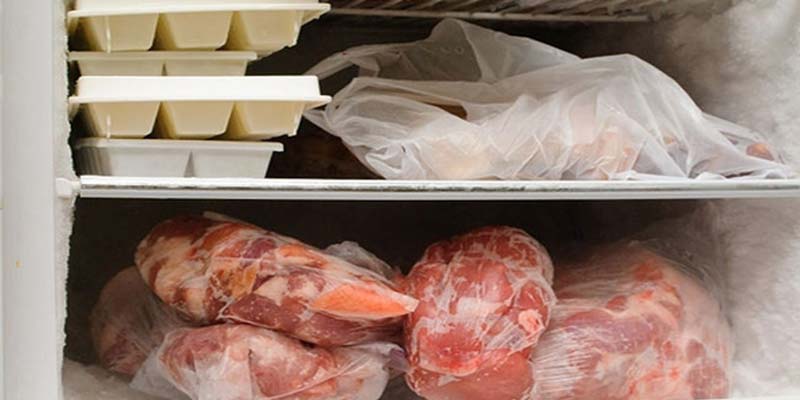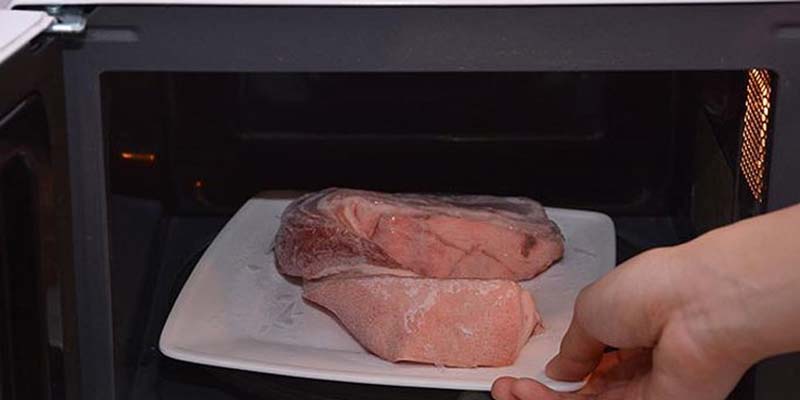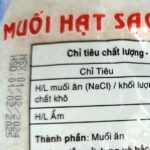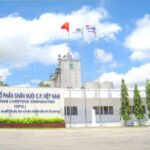1 Don’t Thaw Meat in Hot Water

It’s understandable that you might forget to thaw your meat ahead of time. In a pinch, you may be tempted to soak it in hot water to speed up the process and get dinner on the table. However, thawing meat in hot water creates an ideal environment for bacterial growth.
If you want to use water to thaw your meat, opt for cold water instead. Ensure the water temperature is lower than room temperature, and change the water every 30 minutes to prevent bacterial growth.
2 Avoid Thawing Meat on the Counter or Stove
Some home cooks believe that a warm environment will speed up the thawing process, but this is a mistake. Depending on the size of your meat, it could take several hours or more to thaw completely. Leaving meat to thaw on the stove or countertop without placing it in a clean dish or bowl increases its exposure to bacteria. For safety, it’s best to thaw meat in the refrigerator.
3 Don’t Place Meat in the Top Compartment of the Fridge

Fitting everything into the fridge can be a challenge, but don’t be tempted to squeeze your meat into an empty space in the top compartment. Juices from raw meat can drip onto other foods, potentially contaminating them. Choose the bottom compartment or a suitable shelf to safely thaw your meat.
4 Wash Your Hands
We can’t see bacteria, but that doesn’t mean they’re not there. Get into the habit of washing your hands thoroughly whenever you handle meat or anything else, for that matter. This simple practice will help prevent the spread of bacteria. Remember to wash your hands after cooking as well!
5 Using the Microwave

There are mixed opinions about using the microwave for thawing meat. While some believe it provides an opportunity for bacterial growth, others argue that it’s safe as long as the food is cooked immediately afterward. To err on the side of caution, it’s best to cook your meat immediately after thawing it in the microwave.
6 Washing Meat
Many people wash their meat before cooking, but it’s crucial to remember to wash your hands first. While this practice isn’t inherently wrong, it’s essential to ensure your hands are clean. When you wash meat, harmful bacteria can spread from the sink to your hands. Make sure to disinfect any surfaces that come into contact with raw meat juices.
7 Cooking Meat That Isn’t Fully Thawed
This mistake can ruin your meal. When cold meat is suddenly exposed to high temperatures, it can become tough and chewy. For the best results, allow your meat to thaw completely before cooking.
8 Cross-Contamination
You might not realize it, but using the same utensils or plates for raw and cooked meat can increase the risk of cross-contamination. Always wash utensils, cutting boards, and dishes thoroughly after they come into contact with raw meat. Don’t give bacteria a chance to spread!
These are common mistakes to avoid when handling meat, especially when it comes to meat from livestock and poultry. Home cooks should pay attention to these details to ensure the safety and health of their families.
Source: afamily.vn
Mastering the Art of Chopping Board Care: A Guide to Longevity and Sanitation
Introducing the ultimate guide to cutting board care: unlock the secrets to maintaining and preserving your chopping boards, ensuring they remain pristine and durable. Discover the dos and don’ts of chopping board maintenance, and elevate your kitchen game with these expert tips and tricks. Learn how to care for your cutting boards like a pro and impress your guests with your culinary prowess.
Why Does Packaged Salt Have an Expiry Date?
Salt is a staple mineral, and when kept dry, it remains impervious to degradation over time. So, why do packaged salt products still bear an expiration date? This is a curious conundrum that warrants some elucidation. The answer lies in the journey salt undertakes from its pristine mineral form to the refined, packaged product on our shelves.






































